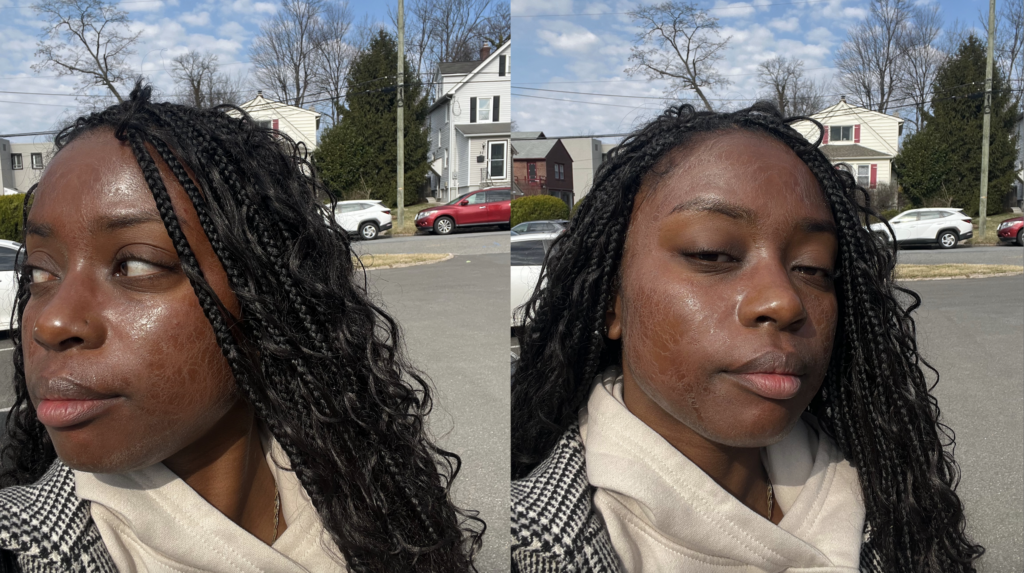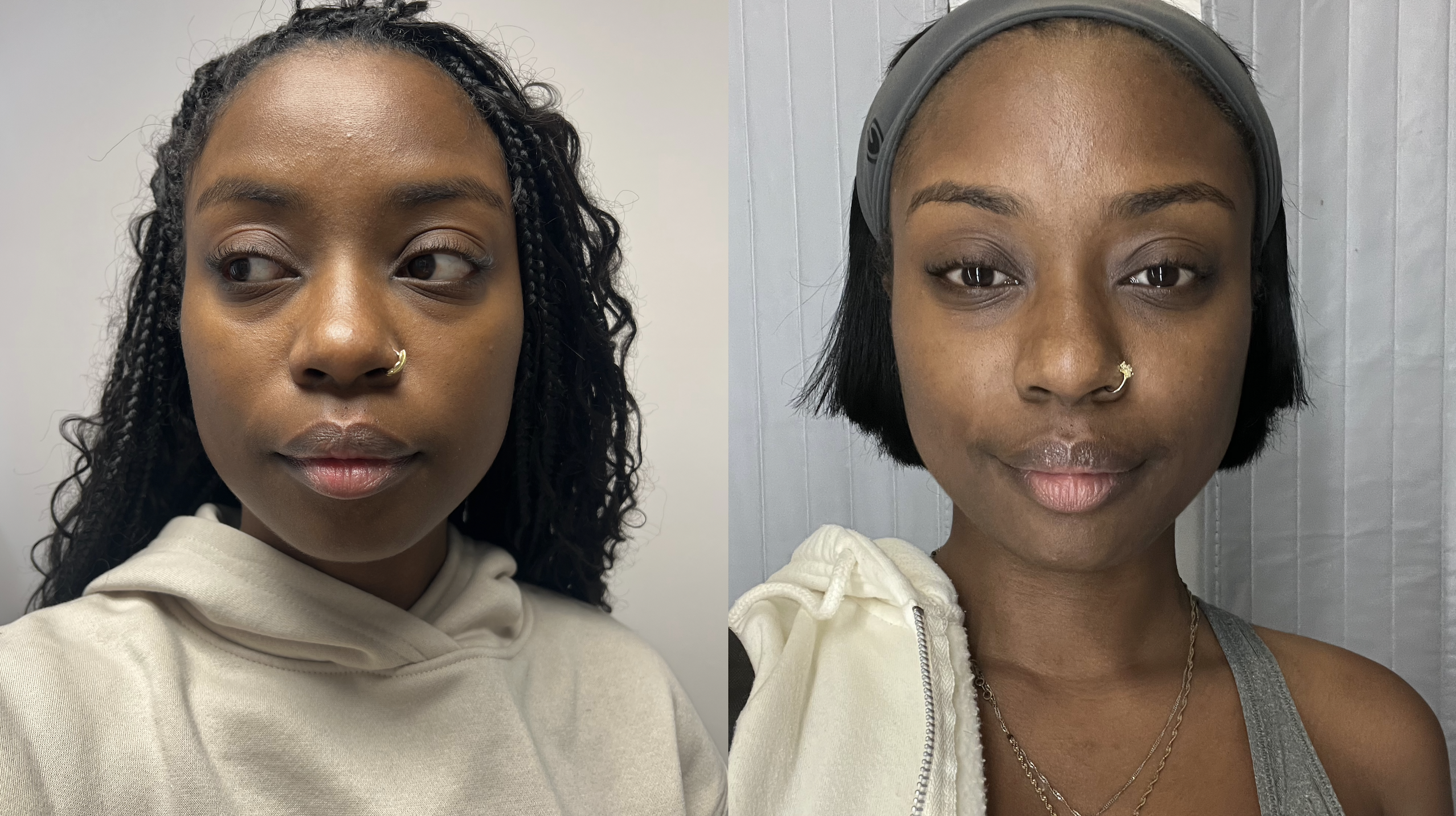As a Black woman in my late twenties, I’ve always taken pride in maintaining healthy skin. While I didn’t struggle with severe acne or significant discoloration, I did notice minor texture issues and slight hyperpigmentation that I couldn’t seem to smooth out, no matter how consistent I was with my skincare routine. Seeking a solution, I consulted with Dr. Alexis Parcells of Parcells Plastic Surgery. She recommended a series of three microneedling sessions, spaced a month apart, each combined with Platelet-Rich Plasma (PRP) therapy. The results? My skin became smoother, more radiant, and virtually texture-free.
RELATED: Microneedling Results: A Before and After Comparison
Understanding Microneedling with PRP
Microneedling, also known as collagen induction therapy, involves using fine needles to create tiny punctures in the skin. These micro-injuries stimulate the body’s natural healing process. They promote the production of collagen and elastin which are proteins essential for maintaining firm, youthful skin. When combined with PRP, which is derived from your own blood and rich in growth factors, the treatment’s regenerative effects are amplified. PRP enhances cell turnover, accelerates healing, and boosts collagen synthesis, leading to improved skin texture, tone, and elasticity.
Microneedling and Black Skin: What You Need to Know

For Black women, considering any skin treatment requires understanding how it interacts with melanin-rich skin. Microneedling is generally safe for all skin tones, but it’s crucial to be aware of specific considerations:
- Hyperpigmentation Concerns: While microneedling can help reduce hyperpigmentation by promoting even skin tone, there’s a risk of post-inflammatory hyperpigmentation (PIH) if not performed correctly. It’s essential to have the procedure done by a professional experienced with darker skin tones.
- Skin Sensitivity: Black skin may be more prone to inflammation. Ensuring proper aftercare, like avoiding sun exposure and using gentle skincare products, can mitigate potential irritation.
Consulting with a knowledgeable dermatologist or skincare professional is vital to tailor the treatment to your skin’s unique needs.
How Much Does Microneedling with PRP Cost?
The cost of microneedling with PRP varies based on location, provider expertise, and the specifics of the treatment package. On average, patients can expect to pay between $500 and $1,500 per session for a combined microneedling and PRP treatment. Some clinics offer package deals for multiple sessions, which can reduce the overall cost per session. For example, a three-session package might range from $1,500 to $4,500, depending on the provider and region.
It’s important to note that these treatments are typically considered cosmetic and are not covered by insurance. However, many clinics offer financing options or payment plans to make the procedure more accessible. Always consult with your provider to understand the full scope of costs, including any additional fees for consultations or aftercare products.
My Personal Experience

I started my journey at Parcells Plastic Surgery’s Milburn, New Jersey location. From the moment I stepped into the office, I was greeted by the warmest staff. That calming energy was especially appreciated because, let’s be honest, microneedling doesn’t exactly sound like a spa day.
I consider myself someone with a pretty high pain tolerance. I’ve gotten waxed, needled, and even sat through tattoo sessions without flinching. So, for the most part, microneedling wasn’t that bad. But I won’t lie, the forehead is another story. That area has the least amount of fat on your face, so when the needles glide across your forehead, it feels like someone’s tattooing directly on bone. It’s not unbearable, but it’s definitely the moment when you clench your fists. Each session, I opted for no numbing cream but if your pain tolerance isn’t like mine then go ahead and ask for it.
Recovering from Microneedling with PRP
Make sure to not make plans for the rest of the day. After the appointment, my face looked red, irritated, and kind of scary. I lovingly referred to it as my “zombie face.” On top of that, they leave the leftover PRP on your skin to soak in for the rest of the day, so there’s a shiny, yellowish coating just sitting there. You can’t wash it off until the evening. It’s all part of the magic, but it’s definitely not a brunch-ready look.
The irritation and redness disappeared by the next day, and the real glow-up started around day four or five. That’s when I started noticing the difference. I had a smoother texture, smaller pores, and a fresh-faced radiance that didn’t require a drop of foundation. Each session brought more refinement, and by the end of my third visit, I was honestly floored by how even and clear my skin looked.
Should You Get Microneedling with PRP?
Microneedling with PRP has been a transformative experience for my skin. For Black women considering this procedure, I recommend consulting with a trusted professional who understands the nuances of melanin-rich skin. With proper care and expertise, microneedling with PRP can be a game-changer in your skincare journey.
